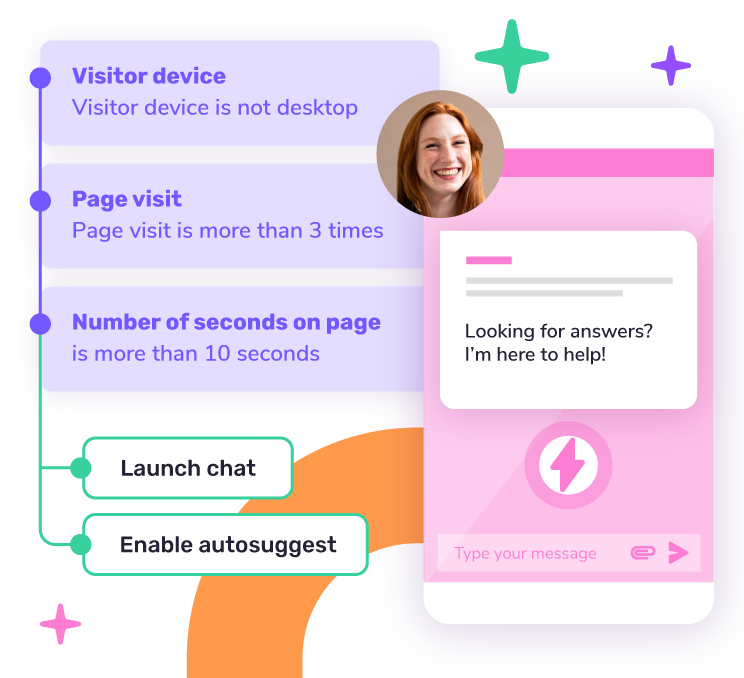From its origins in the early days of the Internet, eCommerce has grown into a sophisticated sector. But within that period, it’s not just eCommerce businesses that have become more complex. Customer expectations have evolved too.
It wasn’t too long ago that online buyers were ready to wait for 10 or more days for their order to arrive. Those days are long gone.

Prospects have no qualms about switching to the competition if their expectations are not met. ECommerce companies are especially vulnerable since customers do not need to physically move to a competitor. Rather, it’s as simple as going to a different website in a matter of seconds.
Virtually every business understands the need to meet customer expectations. Yet, many eCommerce companies fall short. That’s largely because fulfilling customer expectations demands a consistent, well-thought-out, end-to-end strategy that covers all key bases. Here’s how to do it.
1. Improve the online experience
Think about your personal experience browsing websites. You must have noticed there are websites that feel friendly to visit and navigate. Then there are those that come across as disjointed and chaotic. ECommerce websites span this user experience spectrum. This has a real impact on lead conversions and customer satisfaction. In case you’re looking to boost sales through digital events, always make sure your virtual events platform has a product showcase feature that integrates with your E-Commerce platform.
Define your target demographic and determine what layout and workflow will be most appealing to them. This is something you will tweak over time as you become more intimately aware of your customers' needs.
Make it easy for first-time visitors to find what they are looking for – whether through exploration or via on-site search. Keep navigation intuitive. For instance, most websites will have their menu options at the top of the page. Placing your eCommerce site’s menu at the bottom of the page only would only hamper the user experience since it’ll be in a place they least expect.
2. Engaging and interactive content
Make your website exciting to visit and explore. This is especially important for an eCommerce site since you want to grab and maintain visitor attention for as long as is needed to increase the chances of lead generation and conversion.
Interactive content starts with the text itself. It should be logical, well-researched, concise, readable, spell-checked, and grammatically correct. Provide direct answers to what customers are likely looking for when they land on that service, product, or blog page.
While the quality of the text is critical, text alone can be bland. Spice it up with the right mix of images, videos, emojis, and other interactive content. Integrate A/B testing to see which mix of elements seems to deliver the best results in lead generation and conversion.
Of course, all this has to be done while taking into account page loading speed. Too many elements could slow down the page, which would be counterproductive to customer satisfaction. It may also make the page appear unpleasantly ‘busy’. Strike the right balance.
3. Omnichannel customer experience
When a customer calls or emails your organisation to lodge a complaint, the last thing they want to do is have to repeat their issue to multiple customer service representatives. That will only aggravate them more and be an unnecessary distraction to your goal of resolving the issue.
One way to prevent that from happening is setting up an omnichannel customer service system that brings together customer interaction on all touch points — ranging from live chat and chatbots to email and phone calls. And this is not just important for the negative scenarios like the one described in the previous paragraph. It’s actually a means of preempting customer needs when they do call.
Your call centre staff, for example, will be aware of your customer’s Facebook enquiry that occurred a day or two before. Customer conversations should be captured in near real-time, irrespective of the channel that data is received from. Each time they reach out with an inquiry, they should feel like they are continuing the conversation with the same person.
4. Proactive personalisation
We are no longer in the 90s when generic messages to your entire customer list were considered the gold standard for customer service communication. That is just is considered sub-par in many respects.
Customers today expect you to see them as not just a random ID in your customer database but as a distinct individual (or business, for B2B eCommerce) with a unique combination of preferences.
Something as simple as addressing your customer by their name makes them feel like you took the time to create a message that is targeted to them alone. Go further and use their past orders and their click trail on your website to develop more personalised offers, presented via pop-ups, emails, or text messages.
5. Offer several shipping options
Give your customer the chance to choose the shipping option that’s most ideal for them. Yes, everyone would want their order to get to them within the shortest possible time. However, there is often a cost incurred for uber-quick delivery. Not every customer will want to pay—directly or indirectly—the extra fee for quick shipping.
Ergo, provide multiple alternatives such as 10-day, two-day, next-day, and same-day shipping. With that, your customers wield more control over their order’s price and delivery – the expectations you can meet and exceed. Offering additional services such as proof of delivery can improve customer experience as well.
Multiple shipping options are an advantage to your business as well. The longer the shipping window, the lower the cost of shipping, and the better the chances that you can provide free shipping without significantly eating into your profitability.
6. Provide order timelines and tracking information
Accurate information is perhaps your most powerful tool for managing customer expectations. Vague, confusing data will only cause disappointment.
Your product information and user guides are where it begins. All product data should be comprehensive enough for a prospect to make an informed decision to buy. Beyond that though, it is in the fulfilment process that many eCommerce companies drop the ball.
Start by displaying order timelines at checkout, depending on the chosen shipping option. That way, the buyer knows when their order will get to them. Next, provide tracking information automatically until the package is received. This lowers anxiety on the buyer’s end and reduces the number of enquiries your customer service team receives.
7. Invite and act on feedback
Some customers will aggressively look for ways to contact you when they feel you have failed to meet their expectations. However, those who will quietly move on to your competition are just as detrimental.
To make sure you always have your ear on the ground in keeping tabs on customer contentment, create opportunities and channels for customers to provide feedback as conveniently as possible. Do that through feedback forms, pop-ups and quizzes. Accommodate both the buyers who want to go into elaborate detail and those who only have time to rate their experience on a predefined scale (e.g. 1 to 10).
Remember to actually act on feedback. Make changes, provide progress updates or give reasons why your process is the way it is. Acting on feedback gives customers a sense of ownership of your business, strengthens their loyalty to your brand, and converts them into powerful ambassadors. Disregarding feedback you asked for is as bad or worse than not welcoming any feedback at all.

8. Monitor the competition
Build and they will come, right? Well, it doesn’t always work that way. If your customers have better places to go to, they are unlikely to come your way. Your eCommerce business does not exist in a vacuum. Prospects have dozens of alternatives at their disposal – both online and offline.
You cannot afford to put your head down and focus on what is going on within your business alone. What your rivals do impacts how your customers gauge the quality of their experience with you. Keep track of what competitors are doing. Take note when they make changes that seem to resonate positively with the market so you can make amendments to your own process accordingly.
You do not need to react each time your competitors do something different. At the minimum though, you want to have a well-thought-out response when your customers insinuate your rivals have better service than you do.
Wrapping up
ECommerce is no longer the revolutionary idea it was in the 1990s.
With that, comes ever-greater expectations on the quality of service. Managing these expectations is key to keeping customers happy.
Delighted customers stick with you over the long haul and become powerful, unpaid advocates of your brand within their social circle.
Of course, despite your best efforts, your business is not perfect. You are bound to run into mishaps every so often. Even though customers sometimes have lofty expectations, most are realistic. They will overlook poor service if you demonstrate commitment to preventing a recurrence.
